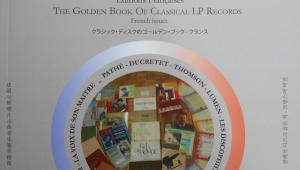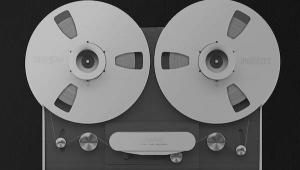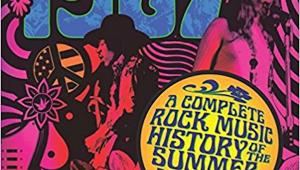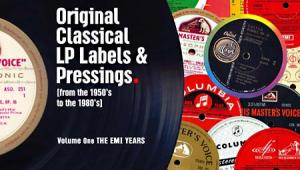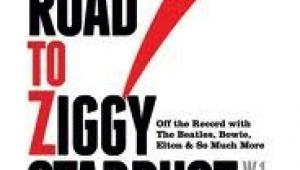Russian Collector/Historian Produces Reference-Quality, Fully Illustrated Labelographies
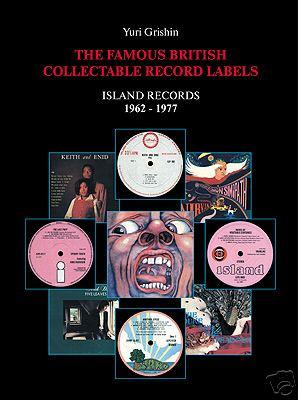
Note: The third book in this series, covering the Famous Charisma label, was recently issued (late 2008).
When records were records (as they are increasingly becoming again) the label was like a window into the company's esthetic soul. The label was a like a car company's badge; a coat of arms. The label was important. So important the companies eventually became known as 'labels.'
Label art was lavish. The best ones were sumptuously produced using high quality paper and inks, but more importantly they had a certain industrial artwork 'vibe' that told you what was in the grooves. Like those old Decca SXLs or even Elektra's EKS 70000 tan and white label series. Ever see an original gold and black Telefunken? Or an original 'tulip' DGG? They somehow expressed what was in the grooves.
RCA's switch in the early 1970's to a soulless corporate logo label perfectly mirrored the sinking quality of the music, sound, packaging and especially the pressings. It was genius!
If you're a label lover, if you segregate by label, if an odd serenity sweeps over you when you handle a Warners-7Arts green label Van Morrison album but not a later 'palmtree' edition, you need to know about Yuri Grishin's 'The Famous British Collectable Record Labels' series of books.
Mr. Grishin's 'Island Records 1962-1977' released in 2006 is meticulously researched, thoroughly annotated and filled with exquisitely produced and printed label scans that border on the pornographic.
Do you remember when you saw your first 'pink label Island' LP? I do mine. It was a copy of Jethro Tull's Stand Up (ILPS 9103). I found it in a small store in Lexington Massachusetts located by the train station called 'The Depot.' I knew just by looking at that record (especially the label), that it was something special compared to the American Reprise pressing I already had. Of course having been turned on to the Parlophone Beatles albums a few years earlier, I had a well-founded pre-conceived notion about the improved sound quality well before listening.
The worldwide popularity and collectability of those early pink label Island records now, some 39 years later, attests to the strength of that early rush! Clearly it was one felt around the world, including back in the USSR.
Mr. Grishin's 352 page labelography (text pages are duplicated in both English and Russian) is thorough and well-researched. The number of 'pink label' variations was a big surprise. For instance, one page reproduces four 'pink label' variations of Jethro Tull's This Was (ILPS 9085). There are pressing, jacket printing and matrix information provided for each label image.
Also covered are Sue, Dragon and Trojan, three other labels associated with Chris Blackwell's Island Records (Sue was an American label distributed by Island, but Island apparently began licensing other labels' titles as well and issuing them on Sue, which was not part of the licensing agreement). Blackwell, an heir to the Crosse and Blackwell family fortune, though born in London, spent time or grew up in Jamaica and helped to introduce ska and reggae to the UK and the world via those labels. Also in the Island stable and covered are releases on Bronze and Chrysalis, as well as Island-licensed and distributed in the UK American labels like Blue Thumb.
There are color slicks of every album cover and even a section devoted to address and jacket printer issues and variants thereof, plus coverage of 45rpm singles. Believe me, you'll come away from this in awe of Mr. Grishin's thoroughness, not just in giving you every tiny detail and variation, but in the way he's indexed and arranged the book. The index breaks down by catalog number with prices, by album (you can find every reference to any given title), and by the standard people, place and thing listing.
To put icing on the cake, Mr. Grishin includes a terrific interview he conducted with veteran mastering engineer Denis Blackham ('Bilbo') and Blackham's explanation of the disc cutting process. He also indentifies many mastering stamps you've surely seen on the lead out groove area of most of your records.
If you are at all interested in collecting 'pink label' Islands, or 'sun-ray' Islands, or just in having original pressings of artist you love like Nick Drake (get out the big checkbook: Five Leaves Left is listed as being worth $800 and I believe it, though many of the prices seem low to me) and before bidding on Ebay or buying elsewhere you want to be sure of what you're bidding on (you'll end up knowing more than the seller, that's guaranteed), you need this book!
Visit Mr. Grishin's site to order: www.collectable-records.ru You will be glad you did!
Also consider his recent book 'Harvest Label 1969-1980,' which is somewhat misnamed since the book covers E.M.I. Records, including Columbia, His Masters Voice, EMI/Regal Zonophone, Parlophone, Tamla/Motown, MGM, United Artists, Stateside and of course Harvest. There's more of a historical/chronological organization to this book, which is a good idea. In fact, my only criticism of the first book is its lack of historical perspective. It's told almost exclusively forensically from the label and jacket artwork.
The book features the same incredible attention to pressing and printing details, artwork variations etc. and I was flattered to find myself mentioned in the section covering identification of the EMI matrix number system.
Again, the indexing is superb, this time including artwork designers, photographers, engineers, producers and recording studios! Also getting the same thorough treatment in separate books are the Famous Charisma and Vertigo labels.
Demand these books as Christmas presents or buy them for yourself. If you're serious about record collecting, these masterpieces of research and presentation are essential reference works. Thanks for doing this Mr. Grishin!
Grishin's latest book on the Famous Charisma label has just been released. We'll review it shortly!


